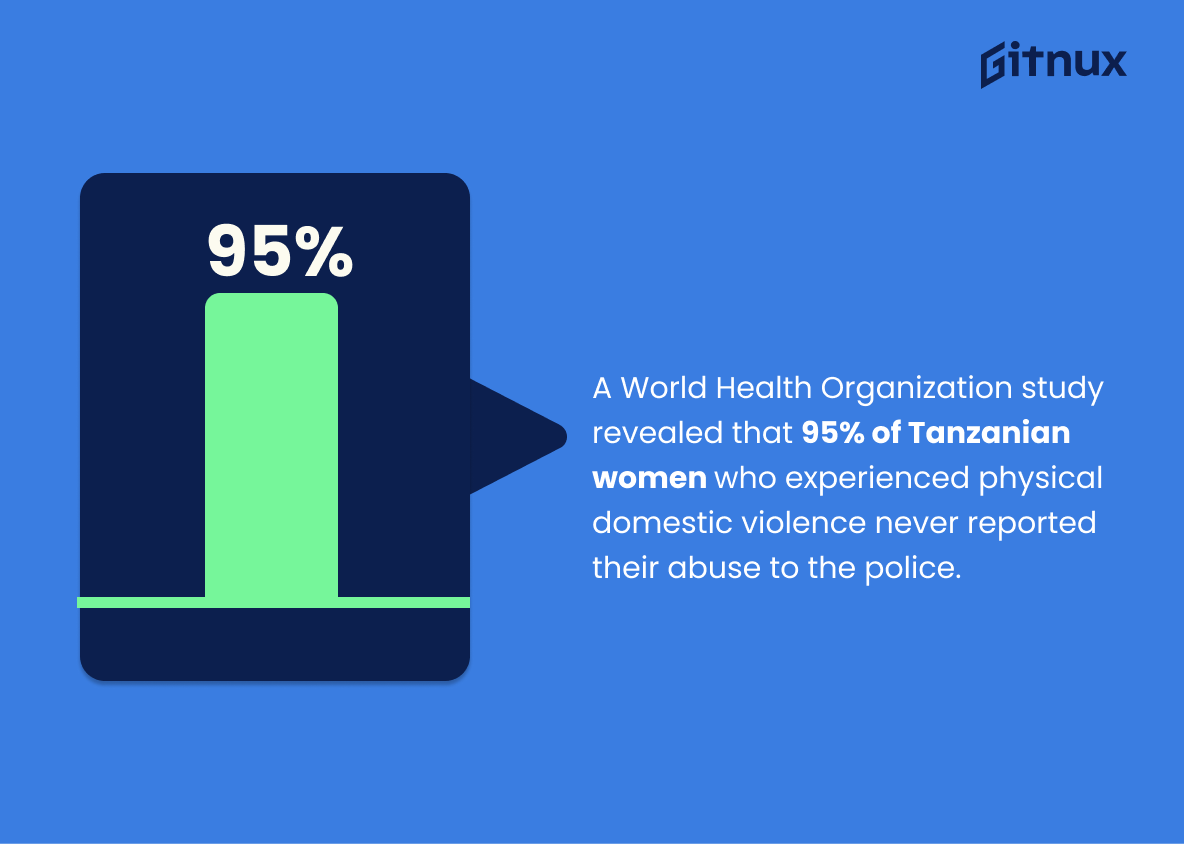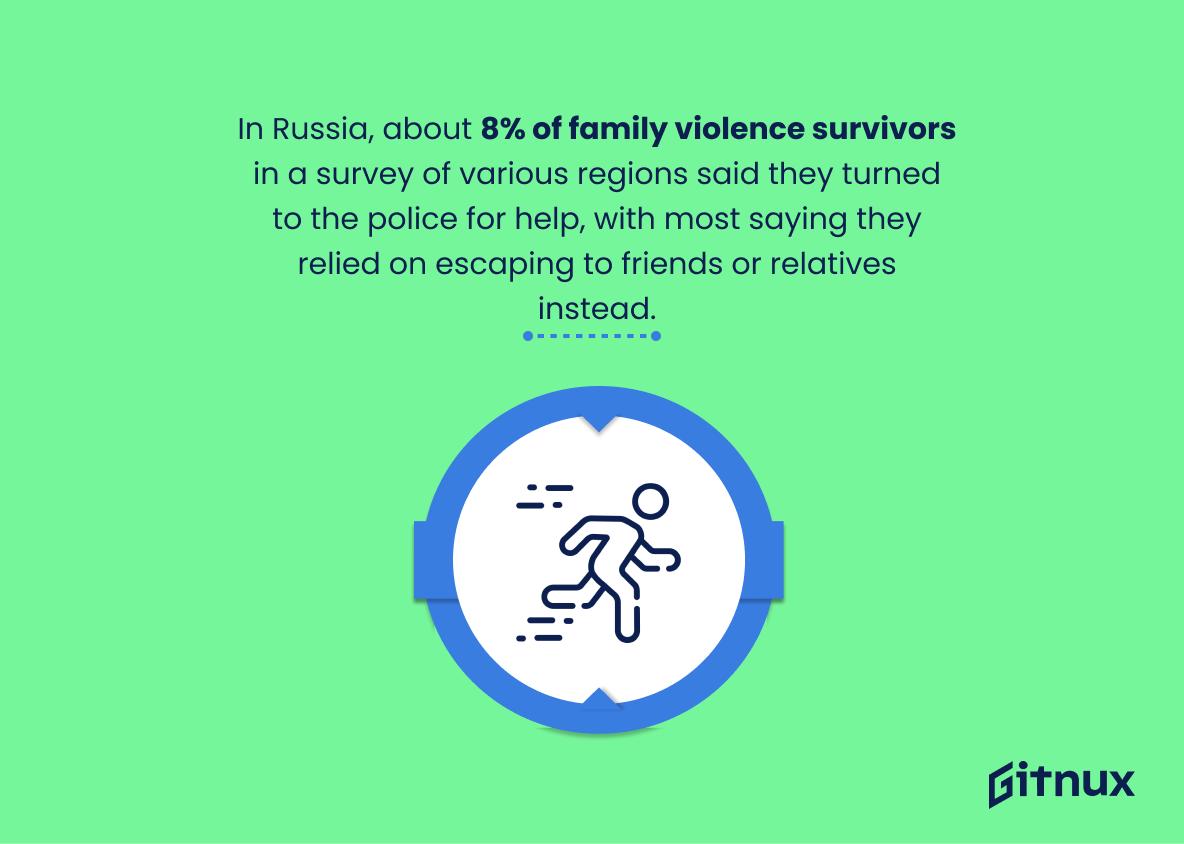Domestic violence is a global issue that affects millions of people around the world. Unfortunately, many cases go unreported due to social stigma or cultural norms against disclosure. This blog post will explore some of the statistics on domestic violence incidents that have gone unreported in various countries and regions across the globe.
In the United States, approximately 30% of all domestic violence incidents are not reported to police authorities according to data from The Bureau of Justice Statistics (BJS). In England and Wales, only 18% were reported in 2019/2020 as estimated by The Crime Survey for England and Wales. A UN study suggested 49% worldwide never report their cases or seek help while an Australian study revealed 80%. Canada saw 70%, Europe 14%, Asian-Americans 8%, South Africa 1 in 9 women who experienced abuse sought assistance from law enforcement agencies, India one third female victims contacted police officers; Mexico 62%; Spain 58%; Tanzania 95%; Philippines 50%; Turkey 93%; Russia 8 %; Kenya 65%.
These numbers demonstrate how widespread this problem is globally – with most instances going unnoticed or ignored altogether – making it difficult for governments and organizations to address these issues effectively without accurate information about what’s happening on ground level. It also highlights why it’s so important for survivors of domestic abuse to come forward if they feel safe enough do so – because when we don’t speak up about our experiences then nothing changes.
Unreported Domestic Violence Statistics Overview
A 2019 UN study suggested that 49% of women worldwide experiencing domestic abuse never report their cases or seek help.
This statistic is a stark reminder of the prevalence of domestic abuse and the lack of support for victims. It highlights the need for greater awareness and resources to help those affected by domestic violence, as well as a greater understanding of the barriers that prevent victims from seeking help. This statistic is a call to action to ensure that victims of domestic violence are given the support they need and deserve.
Roughly 21 varieties of abusive behavior were experienced by only 5.5% of American female survivors who reported the abuse to the police.
This statistic is a stark reminder of the prevalence of domestic violence in the United States and the lack of reporting that occurs. It highlights the fact that even though there are 21 varieties of abusive behavior, only a small fraction of female survivors are coming forward to report it to the police. This is a concerning issue that needs to be addressed in order to ensure that victims of domestic violence are receiving the help and support they need.
In Canada, 70% of spousal violence incidents were not reported to the police in 2014.
This statistic is a stark reminder of the prevalence of domestic violence in Canada, and the fact that many incidents go unreported. It highlights the need for greater awareness and education about domestic violence, as well as improved support services for victims. It also serves as a call to action for law enforcement and other authorities to take steps to ensure that victims feel safe and empowered to report incidents of domestic violence.
In the European Union, only 14% of women experiencing severe domestic violence reported the incidents to the police.
This statistic is a stark reminder of the prevalence of domestic violence in the European Union, and the fact that the majority of incidents go unreported. It highlights the need for greater awareness of domestic violence and the importance of providing victims with the resources and support they need to come forward and report their experiences. It also serves as a call to action for law enforcement and other authorities to take a more proactive approach to tackling domestic violence and ensuring that victims feel safe and empowered to speak out.
The National Crime Victimization Survey (NCVS) of the United States found that 56% of intimate partner victimizations were not reported to the police between 2006-2015.
This statistic is a stark reminder of the prevalence of domestic violence that goes unreported. It highlights the fact that even though intimate partner victimizations are a serious issue, many victims are not coming forward to seek help from the police. This statistic is a call to action for those in positions of power to create a safe and supportive environment for victims of domestic violence to come forward and report their experiences.
Asian-Americans and Pacific Islanders in the United States are the least likely to report domestic violence incidents to the police, with only 8% seeking assistance.
This statistic is a stark reminder of the reality that Asian-Americans and Pacific Islanders in the United States are not receiving the help they need when it comes to domestic violence. With only 8% of these individuals seeking assistance, it is clear that the issue of domestic violence is not being addressed in a meaningful way. This statistic highlights the need for greater awareness and support for those affected by domestic violence in this community.
A South Africa study found that only 1 in 9 women who were victims of domestic violence reported the abuse to the police.
This statistic is a stark reminder of the prevalence of domestic violence in South Africa and the lack of reporting that occurs. It highlights the need for more awareness and education around domestic violence, as well as the need for more support for victims to come forward and report the abuse. This statistic is an important part of understanding the full scope of the issue and the need for further action to be taken.
A study in Pakistan revealed that 94% of women experiencing physical domestic violence did not report it to the police.
This statistic is a stark reminder of the prevalence of domestic violence in Pakistan and the lack of reporting of such incidents. It highlights the need for greater awareness and education about domestic violence, as well as the need for more effective support systems for victims of domestic violence. It also serves as a call to action for the government and other stakeholders to take steps to ensure that victims of domestic violence are able to report their experiences and receive the help they need.
Less than 40% of female domestic violence victims in Mexico report their abuse to either the police or a social service agency.
This statistic is a stark reminder of the reality of domestic violence in Mexico, where the majority of female victims are not receiving the help they need. It highlights the need for greater awareness and support for victims of domestic violence, as well as improved access to resources and services. It also serves as a call to action for those in positions of power to take steps to ensure that victims of domestic violence are able to access the help they need.
Only one in three female domestic violence victims in India reported their abuse to the police.
This statistic is a stark reminder of the reality that many female domestic violence victims in India are not receiving the help they need. It highlights the fact that many victims are not coming forward to report their abuse, either due to fear of repercussions or lack of awareness of available resources. This statistic is a call to action for those in positions of power to take steps to ensure that victims of domestic violence are able to access the support they need.
In a 2013 survey, 58.7% of Spanish female respondents who experienced domestic abuse did not report their cases to the police.
This statistic is a stark reminder of the prevalence of domestic violence in Spain, and the fact that many victims are not coming forward to report their cases to the police. It highlights the need for greater awareness and support for victims of domestic violence, so that they feel empowered to speak out and seek help.
A World Health Organization study revealed that 95% of Tanzanian women who experienced physical domestic violence never reported their abuse to the police.
This statistic is a stark reminder of the prevalence of domestic violence in Tanzania and the lack of reporting of such abuse. It highlights the need for greater awareness and education about domestic violence, as well as improved access to resources and support for victims. It also serves as a call to action for law enforcement and other authorities to take steps to ensure that victims of domestic violence are able to report their abuse and receive the help they need.
In Russia, about 8% of family violence survivors in a survey of various regions said they turned to the police for help, with most saying they relied on escaping to friends or relatives instead.
This statistic is a stark reminder of the reality of domestic violence in Russia, where many survivors feel unable to turn to the police for help. It highlights the need for greater awareness and support for those affected by domestic violence, as well as improved access to resources and services that can help survivors escape their abusers.
Conclusion
The statistics presented in this blog post demonstrate the alarming prevalence of unreported domestic violence incidents around the world. From the United States to Kenya, it is clear that many victims are not seeking help or reporting their abuse due to social stigma and cultural norms against disclosure. This highlights an urgent need for increased awareness and support services so that survivors can feel safe coming forward with their stories and receive justice they deserve. It is essential that we continue working together as a global community to end all forms of gender-based violence by providing resources, education, advocacy, and protection for those affected by these heinous crimes.
References
0. – https://www.www.ncbi.nlm.nih.gov
1. – https://www.www.bjs.gov
2. – https://www.www.reuters.com
3. – https://www.apps.who.int
4. – https://www.www.unwomen.org
5. – https://www.www.tandfonline.com
6. – https://www.www.worldbank.org
7. – https://www.pubmed.ncbi.nlm.nih.gov
8. – https://www.aaci.org
9. – https://www.jpma.org.pk
10. – https://www.www.ons.gov.uk
11. – https://www.www150.statcan.gc.ca
12. – https://www.fra.europa.eu















